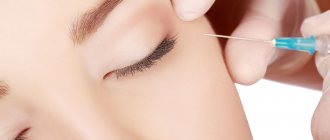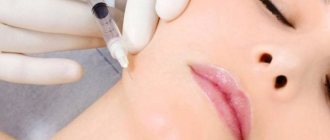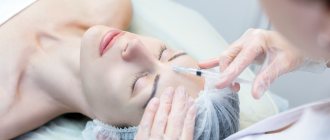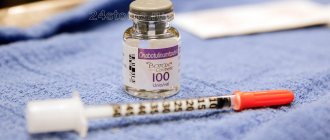If this article stops at least one woman from smoothing out wrinkles with Botox, it was not written in vain.
The trouble is that the information field is clogged with one-sided concepts about Botox, generated by the cosmetology industry with one sole purpose - obtaining financial gain. But no attempts to create the appearance of the benefits of Botox can refute the fact that it is the most terrible poison of neuroparalytic action. All this diminutive rhetoric about “micro”, “baby”, “nano” doses is just a commercial ploy. Botox is definitely harmful, period. In any doses. This is a powerful poison that paralyzes nerve impulses and “turns off” muscles, giving ugly complications, and also insidiously penetrates into other parts of the body, beyond the injection area.
Before you inject yourself in the face with a substance, one gram of which kills a million people, let’s look at the facts and scientific evidence. We think and draw conclusions about how dangerous Botox is.
How Botox works
Botox injection is an effective technique for eliminating facial wrinkles and forming a beautiful facial contour. Essentially, this is a correction without a scalpel.
Botox is a weakened, purified neurotoxic drug based on botulinum toxin. The latter is produced by the bacteria Clostridium botulinum. A powerful neuroparalytic that can relax facial muscles.
Botulinum toxin A has been used in cosmetology for more than 30 years. It is injected into the area of the facial muscle, as a result it relaxes, and the skin relief of the area is noticeably smoothed. The hydrobalance of the deep layers of the dermis is restored, the natural production of collagen and elastin is stimulated.
Botox is used to correct facial contours, smooth out wrinkles on the forehead, in the eye area and nasolabial triangle.
Botox injections are allowed after 40 years of age
Most people think that Botox can be done when all age-related changes have fully begun to appear, i.e., it should be done after 40 years. However, this procedure can be attended from 18 years of age. Of course, only attend the procedure if you need to. Everyone knows that even teenagers can have severe expression wrinkles, which greatly age the face.
It is much easier to solve the problem of wrinkles in the initial stages than when they have already become very deep. In addition, the older a person is, the harder it is for his skin to get used to changes. In this case, the rehabilitation process may be delayed.
Exposure time
The duration of the effect of Botox depends on the individual characteristics of the body, habits, and care procedures:
- Age. Typically, botulinum therapy is indicated for people over 45 years of age, but often younger people also need correction. The breakdown of drug substances in a young body occurs faster, so the duration of the effect is reduced.
- Behavior. Poor nutrition, lack of sleep, stress and negative habits affect not only your well-being, but also your appearance - they worsen the effect of injections.
- Quality of the drug. The drug must be original and stored correctly.
Comparative table of botulinum toxin composition
| Type of toxin/characteristics | Botox | Dysport | Xeomin | Lantox | Neuronox | Relatox |
| Units | 100 units | 500 units | 100 units | 50 and 100 units | 100 units | 50 and 100 units |
| Molecular mass | 900 kDa | 500 kDa | 150 kDa | 900 kDa | 900 kDa | 150 kDa |
| Albumen | 500 mcg | 125 mcg | 1 mg | — | 500 mcg | — |
| Excipients | NaCl 900 mcg | Lactose 2.5 mg | Sucrose 4.7 mg | Gelatin 5 mg Dextran 25 mg Sucrose 25 mg | NaCl 900 mcg | Gelatin 6 mg Maltose 12 mg |
Activity units reflect the dosage of drugs. One unit of activity corresponds to the average lethal dose (LD50) for female mice of average weight. Methods for determining activity units are individual and are not disclosed by manufacturers, so they are not equivalent to each other. It has been roughly established that 1 unit of Botox is almost equal in activity to 1 unit of Xeomin, Lantox, Neuronox and Relatox, and 3 units of Dysport. But once again I will emphasize that the equal sign cannot be used in this case. In practice, with equivalent administration of different drugs, different severity of effect and duration of action will be observed. This is also due to the fact that each batch of the drug may differ in activity by +/- 10%, which is reflected in the certificates provided by the manufacturer with each batch of toxins. Botulinum toxins are a biological product, which makes it difficult to standardize and store.
The particle size (molecular weight) of botulinum toxins will also differ (see table). The smaller the particle size, the greater the diffusion of the drug, the larger the area that can be “covered” with one injection. A high degree of diffusion in the hands of an inexperienced practitioner can lead to unwanted side effects due to the spread of the drug to adjacent muscles. On the other hand, this property provides a more uniform effect on the muscle, a “stronger” and faster effect.
Albumin is the main stabilizing substance. The functions of this protein are to bind botulinum toxin, limit the diffusion of the drug, and also limit its activity. The more albumin, the more subtly the drug works, and the “softer” its effect.
Excipients and their effect on the stability, diffusion and activity of drugs, unfortunately, are not described in the literature, which does not allow us to evaluate and accurately compare drugs with each other.
Signs of Botox working
It is easy to feel the effect of botulinum toxin after the procedure: the facial muscles at the injection site stop working almost immediately, although a trace of the wrinkle will still be visible. For example, it will not be possible to frown your forehead, and, therefore, folds on the skin will not be able to form.
On days 5-7, the distribution of the drug ends, the effect becomes maximum: the skin is noticeably fresher, acquires a healthy shine and tint, and cosmetics fit perfectly on it. Even deep wrinkles are gradually smoothed out.
When administered correctly, Botox injections do not turn the face into a “mask.” There will still be facial expressions and emotions. To get truly excellent results, contact beauty centers - cosmetologists with extensive experience work there.
Negative consequences of Botox due to patient error
The consequences associated with a patient’s violation of the rules of behavior after injections lead to the same disastrous results as medical errors. The hardest thing for patients is to refrain from drinking alcohol, showing off their newly acquired smoothness in front of friends or fans and celebrating such a pleasant event with their girlfriends. During the recovery period, you should not be exposed to heat and sunlight; sports, massage, saunas, steam baths, and solariums must be excluded. Unpleasant consequences of Botox can occur if you take a horizontal position or vigorously rub your face with your hands for several hours after the procedure. It is also not recommended to lean forward for a long time, so as not to provoke migration of the drug. You should not take antibiotics or medications that affect blood clotting.
There are consequences in the form of side effects that are considered a normal reaction of the body. These include a flu-like condition, muscle pain after injection, as well as headaches, tingling in the injection area, a general feeling of nausea and weakness. Side effects of Botox disappear within one to two days after the procedure and do not pose a threat to the patient’s health.
Repeated procedures
After Botox is removed, you can repeat the course to get the results back. Wait until your facial muscles have fully recovered to get the best results.
If Botox was administered for the first time, a corrective session is usually carried out after 8 months. All subsequent injections are performed at intervals of 4-6 months. With this technique you can maintain consistently good results.
If procedures are performed too often, the sensitivity of the dermis and nerve structures increases significantly. Botox dissolves faster each time, correction is required more often.
History of the drug
Botulinum toxin has been used in cosmetology relatively recently, although it was discovered back in the 19th century. It was discovered by scientists from America who investigated the causes of infectious damage to the nervous system - botulism. During the scientific work, a type A neurotoxin was identified, which blocked muscle contraction. By the end of the 20th century, a substance called botox was already included in many drugs and was used to treat spasms and strabismus.
The magical cosmetological properties of Botox injections were discovered completely by accident. A Canadian ophthalmologist used the substance in his practice in the treatment of voluntary eyelid closure. To his surprise, after the injection, the fine wrinkles around the patient’s eyes smoothed out!
This is how a new era in cosmetology began in the early 90s.
Is it possible to extend the result?
Follow all the cosmetologist's recommendations to get the maximum, safe and prolonged effect of the procedure.
We will consider the main recommendations below:
- Physical activity in the first 7-10 days after the session significantly reduces the effect of botulinum therapy.
- There are no additional jokes between the main courses! They will provoke the production of antibodies, which destroy the toxin and reduce its effect to a minimum.
- Avoid solariums, baths and saunas.
- Assess the compatibility of current pharmacotherapy with contraindications to botulinum therapy.
How does Botox work on the face?
Botox is essentially poison. Yes, yes, a nerve agent. But I won’t scare you with the poison and poisoning itself. The poison is administered locally and in very dosed doses; there is practically no harm to the body as a whole. But the harm of Botox for the face is not only in its toxicity, there’s something completely different about the “dog is buried.”
The cosmetologist finds a tense muscle on the face and makes a sniper injection. The poisoned muscle relaxes. However, a healthy muscle must work - and relax, and contract when necessary - during conversation, facial expressions (in order to receive nutrients and remove toxins). However, this does not happen with Botox - the muscle is absolutely motionless. That’s why the cut “beauties” have a face that looks like a wax doll. I won’t even give examples of photos - everyone understands what I’m talking about











